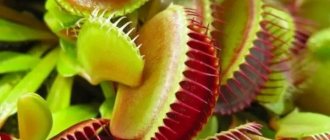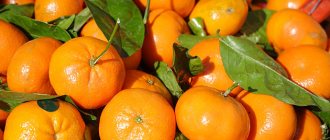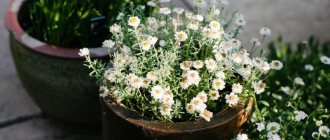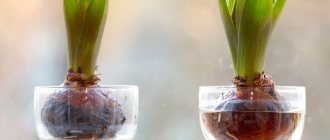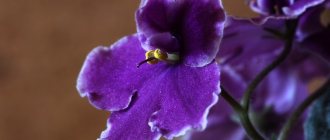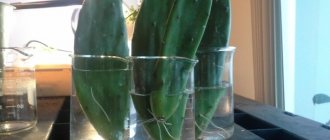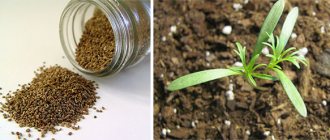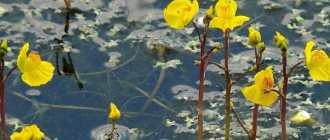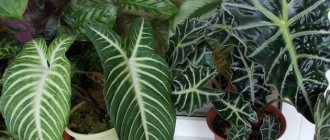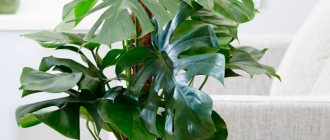Insectivores are a fairly large “collection” of plants from all over the world, there are more than 600 species! Of course, many of them are residents of distant tropics and require conditions for their cultivation that cannot be reproduced in an average apartment.
But some of the carnivorous plants come from regions with a temperate climate and, if desired, these exotics can be placed on your windowsill or even in the garden. Let's look at the most suitable options for beginning gardeners.
First, a little general information - how and why, in the process of evolution, did plants even “get it” to feed on living organisms?
Predatory plants
All these types of plants have one thing in common - they have all adapted to catching and digesting small animals. Of course, these specimens mainly “feed” on insects, but some particularly large species, such as the giant byblis from Australia, can, on occasion, “snack” on a lizard, bird or frog.
Why did plants develop this habit? In this way, they supplement their normal autotrophic nutrition (photosynthesis) with one of the forms of heterotrophic nutrition - as a result, predator plants are less dependent on soil inorganic nitrogen necessary for the synthesis of their own proteins, as well as phosphorus, potassium, sodium, magnesium and other nutrients. Additional nutrition with such animal food accelerates the development of plants and promotes their transition to flowering and fruiting.
Predatory plants catch insects with the help of trapping organs - modified leaves. They attract prey by color, smell or sweet secretions. In some leaves, the leaves transform into peculiar traps of various shapes, in others they acquire the ability to actively move, catching and holding insects.
On the surface of such leaves there are glands that secrete digestive enzymes: pepsin and organic acids, which digest the caught prey, breaking down animal proteins. The products formed as a result of such extracellular digestion, mainly amino acids, are absorbed and assimilated.
The first researchers who noticed the unusual feature of such plants did not dare to describe them in serious scientific publications for a long time, and even if they published their works on this topic, they were subjected to harsh criticism from the rest of the scientific world. The turning point in the study of unusual organisms was Darwin's extensive work, which to this day remains one of the most fundamental on this topic.
Insectivores are predominantly perennial herbaceous plants found in all parts of the world. There are 18 species growing in the CIS, belonging to two families: Sundews and Bladderworts. Although different types of carnivorous plants have different requirements for light, air humidity and soil, they share some common features that allow them to be grown at home.
They need watering with special demineralized water with a slightly acidic, almost neutral environment - ordinary tap water contains mineral salts that quickly accumulate in tissues and can destroy such a plant.
Most carnivorous plants require bright light and high humidity. Different species react differently to the ambient temperature, so this parameter needs to be clarified further if you decide to have such a plant at home.
Mature healthy plants are able to provide themselves with the necessary amount of insects - you can only occasionally carefully offer them a small insect to supplement the diet.
The second most common cause of death of domestic insectivorous plants, after watering with plain water, is mechanical impact on traps in order to examine them closely and regular force feeding of them with various inappropriate products.
Which predator plants can be grown at home without much effort and time?
How to catch insects
The plant's insect catcher is its leaves. Due to the fact that a sweet coating forms on them, insects are attracted. One part of the glands in the butterwort is responsible for the production of plaque, and the other produces enzymes that digest protein compounds. At the bottom of the plant, under the rosette with leaves, there is a false stomach - it contains digestive enzymes.
Compared to other plant predators, butterwort leaves are not able to curl - in this case, insects stick to the sweet base located on the leaves, from which they cannot escape.
But if a large insect sticks to the bush and tries to get out, the leaves will begin to curl up little by little, thereby actively releasing enzymes that dissolve the victim. After this, the leaf dies, which means that the butterwort needs to renew its foliage every 5-6 days.
Sundew
Sundew is a low herbaceous perennial, some species of which grow across all continents in highly moist biotopes, while others grow high in the mountains.
Sundews are classified as “active predators.” Its leaves, usually collected in a basal rosette, are lined with large glandular hairs that become irritated on contact and secrete mucus that serves to trap insects. After the prey falls into the trap, the leaf gradually curls and digestion of the insect begins with the help of special alkaloid substances. Once the insect is digested (usually taking several days), the leaf opens again.
The speed of leaf folding is different for different sundew species, and the mechanism is selective - the leaf reacts only to protein foods, while accidental impacts in the form of a drop of water or a fallen leaf do not trigger the start of the digestive process.
Many types of sundews are grown as ornamental houseplants. Due to their size and comparative unpretentiousness (they come from cool-temperate climates), these are primarily cape and disyllabic sundews. The latter differs from most sundew species in having unusual, very narrow forked leaves.
At home, sundews are suitable for regular watering and spraying (especially in winter), diffuse lighting and air temperature within 16-25°C.
Watering and fertilizing mode
It is very important to maintain the correct watering and fertilizing regime. The root system of these plants is very sensitive to flooding and lack of moisture. The soil in the pot should be constantly moist, but stagnation of water should be avoided.
For irrigation, use only soft water that does not contain calcium salts. Regular fertilizers for indoor flowers are not suitable for these plants. They receive additional nutrition from live food, and the rule here is: it is better to underfeed than to overfeed.
Don't give your little predators pieces of food from your table. They will catch everything they need themselves. Traps that catch prey beyond their strength cannot digest it, they turn black and rot. Such leaves have to be removed.
Avoid touching sundew
and
Venus flytraps
. Of course, watching their reactions is incredibly interesting, but they can be accidentally damaged. Such a leaf will dry out, which will also not add attractiveness to the plant.
Venus flytrap
The Venus flytrap is a plant native to the swampy areas of North America. Apparently this initial growth on soils poor in nitrogen “stimulated” the development of the plant’s unusual ability to obtain additional food for itself.
The Venus flytrap catches its victims (insects, arachnids) using a specialized bivalve trapping apparatus formed from the edges of leaves. The slamming of the trap is initiated by fine sensitive hairs on the surface of the leaves. Moreover, the collapse occurs very actively - this species belongs to an extremely small group of plants capable of rapid movements.
The mechanism is also selective - collapse requires mechanical action on at least two hairs and a certain amount of time, and digestion of the contents begins no earlier than fivefold stimulation of the hairs.
To thrive in an apartment, the flycatcher needs diffused light, regular watering with spraying and a temperature within 10-22°C. Most often, the Venus flytrap suffers in winter when the air is dry and too hot, when even regular spraying and ventilation do not help - it is often infected with gray mold.
Green jaws
of the Venus flytrap (Dionaea muscipula) look especially impressive.
. Its traps are equipped with sensitive hairs located on the inside. If they are touched, a special “closing” mechanism is triggered. Moreover, the Venus flytrap can distinguish its prey. If something inedible (for example, a blade of grass) gets into its teeth, the trap opens again and waits for its happy hour.
This trinity: sundew (Drosera),
nepenthes (Nepenthes) and Venus flytrap (Dionaea muscipula)
is now easy to find on sale. Growing them is not so easy; in unsuitable conditions they will not live long, so before purchasing you should thoroughly prepare and evaluate your capabilities.
Venus flytrap (Dionaea muscipula)
Sarracenia
Sarracenia is another marsh plant, and some species can grow directly in the water. Unlike the two genera of insectivores described above, this is a “passive predator.”
Sarracenia has specialized, open only at the top, tall leaves-tubes (trap-pitchers) with a small “canopy”. The edges of the pitcher-shaped leaf secrete a sweet juice that attracts insects. At the bottom of such a trap there is digestive juice from a mixture of acids, and sometimes also a colony of bacteria with mosquito larvae that help the plant digest its prey.
At home, sarracenia can grow in a mixture of high-moor sphagnum peat or coconut shavings with sand (3:1), which must be kept constantly moist. It thrives in bright light, frequent misting and temperatures around 22°C.
Most often in cultivation you can find unpretentious yellow sarracenia with hollow leaves with an internal pattern and yellow flowers, as well as purple sarracenia and various hybrids.
Nepenthes (pitcher)
Most representatives of this genus grow in tropical Asia, sometimes reaching tens of meters in length in a liana-like form. Of course, we are not talking about them now, but about small species of Nepenthes, which grow quite successfully in apartments in large terrariums, in relatively constant warm and humid conditions.
Like the Sarracenia described above, the hunting tool of Nepenthes is a pitcher leaf. Different plant species have pitchers of different sizes, shapes and colors. Their length varies from 2.5 to 30 cm, and in some species it can reach 50 cm. More often, the jugs are painted in bright colors. The leaf secretes sweet nectar to attract insects, and the digestion of prey occurs due to the digestive fluid at the bottom.
Some tropical species of Nepenthes, in the process of life, have adapted to digest in their pitchers not only insects, but also fallen leaves or droppings of birds and animals.
The most universal substrate composition for nepenthes is a mixture of sphagnum moss and perlite (1:1). The relative air humidity for this plant should be very high, at 70-90%, and the optimal air temperatures for different species range from 25-34°C during the day and 8-10°C at night.
Genlisey
Genlisea prefers moist terrestrial or semi-aquatic environments. Distributed in the flora of Africa, South and Central America, where 21 plant species have been identified.
This is a small herbaceous plant covered with yellow inflorescences. Genlisea traps look like a crab claw, from which the hairs growing at the entrance prevent them from getting out.
Genlisey
A special feature of the plant is the presence of two types of leaves. Some of them are terrestrial with the process of photosynthesis, while others are underground. Underground leaves replace rhizomes, absorb moisture and provide anchorage. They are like hollow, spiral tubes for luring and assimilation of protozoa, into which they are washed away by the flow of water. They will no longer be able to get out, since they will be digested first.
Zhiryanka
This genus is the most non-exotic among insectivores - its wild representatives can easily be found in central Russia in wet meadows and swamps.
The fleshy “buttery” leaves of butterworts (which is why the name is given), small herbaceous perennials, form basal rosettes. The upper side of the leaf is covered with numerous glands - some of them secrete sugary mucus, which is a bait for small insects, while others generate enzymes that facilitate the digestion of prey. The movements of the caught insects lead to a slow curling of the leaf, and the mucus dissolves the proteins of the victim’s body. For small insects, the sticking effect is sufficient - the plant does not even need to roll up the leaves.
In cultivation, the most commonly grown plants are the unpretentious and hardy butterwort with small blue-violet flowers, the grandiflora with beautiful long-blooming purple flowers, and the moranica with pink flowers.
If your windowsills are overflowing with the usual geraniums and violets, maybe it's time to grow some truly unusual indoor plants?
Killer house plants. Killer plants! Don't you dare grow them on the windowsill, otherwise...
Do you like to grow flowers on the windowsill? But did you know that some of them can pose a terrible danger to you or your loved ones? The most seemingly harmless plants can cause allergic reactions or release poison. And “Capriculka!” will tell you what kind of plants these are. Read it, maybe one of them is one of your favorites.
Harmful indoor plants
- Cyclamen Many believe that this cute and beautiful plant is capable of driving away bad dreams and fears. This is a wonderful plant, but don’t forget about its poisonous properties. The most poisonous parts are the seeds and roots of the plant; their juice can cause irritation and inflammation of the skin.
So we strongly do not recommend trying this wonderful recipe, which is quite popular in folk medicine: instilling cyclamen juice for sinusitis. You can burn the mucous membrane, get a jump in temperature, sore throat and difficulty breathing. This will definitely not help you in treating sinusitis. - Dieffenbachia It’s hard to argue with the fact that this plant purifies the air well and improves its chemical composition. Just don’t put it in the bedroom, much less in the nursery. The juice contained in the stem is very poisonous. If it comes into contact with the skin, it can cause burns, and if ingested, it will most likely cause serious digestive and respiratory problems.
- Cacti These are one of the most insidious house plants. Even a modest-sized plant contains in its cell sap more than 120 alkaloids, which negatively affect the human nervous system. The hallucinogens contained in cacti can cause paralysis of the nervous system, their effect resembles the effect of LSD.
- Crassula This plant is found in every second house, because it is believed that it attracts wealth and success to the house. It’s not for nothing that it’s called the money tree. You need to be careful with it, because the juice of the plant contains arsenic. The quantity, of course, is not so large, but for pets, great lovers of eating indoor plants, this will be quite enough to get poisoned.
- Hydrangea Hydrangea flowers are filled with unimaginable attractiveness and even some kind of magic, and all other parts are filled with poison. Touching the plant is completely safe, but if hydrangea juice gets into the body, it can cause increased sweating, stomach pain, itching, nausea, and impair blood circulation.
- Geranium Yes, exactly, such a useful and beautiful geranium can be dangerous. Geranium is an excellent antiseptic, helps relieve stress, and relieves pain from sore throats. However, the smell of geranium can trigger a severe asthma attack and cause an allergic reaction. Geranium is contraindicated for pregnant women, people with low blood sugar and children.
- Poinsettia It is also unsafe to keep the popular “Christmas star” in the house, because its juice contains alkaloids. Neither the flowers nor the leaves themselves are dangerous; the whitish sap is dangerous, as in all plants of the genus Euphorbiaceae. Such a bright plant attracts children and pets, and they happily put it in their mouths, but this can lead to unforeseen consequences.
These plants are definitely not worth growing at home, no matter how beautiful they are. The beauty is clearly not worth it. Before you get any exotic plant, be sure to study the information about it to make sure that it is safe.
And we offer you a list of favorable indoor plants that are best suited for your home. Not only will they make a nice decoration, but they will also clear the air of toxins and protect your health. You will definitely find something for yourself!
Be sure to share this useful article with your friends on social networks!
